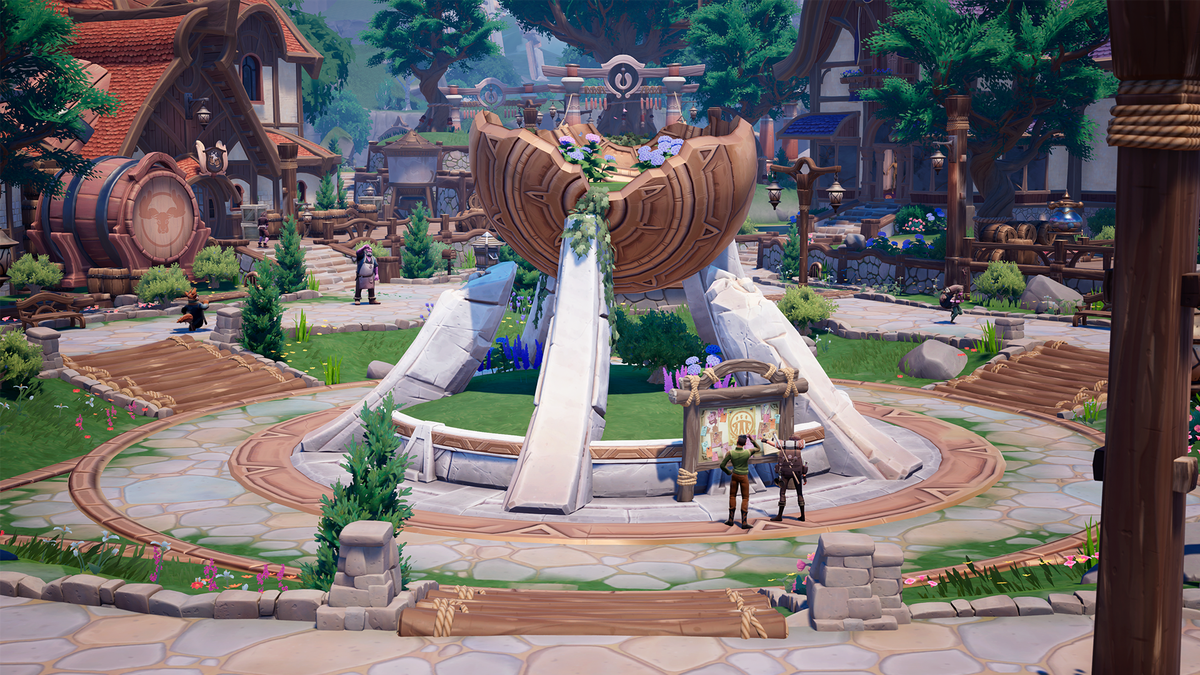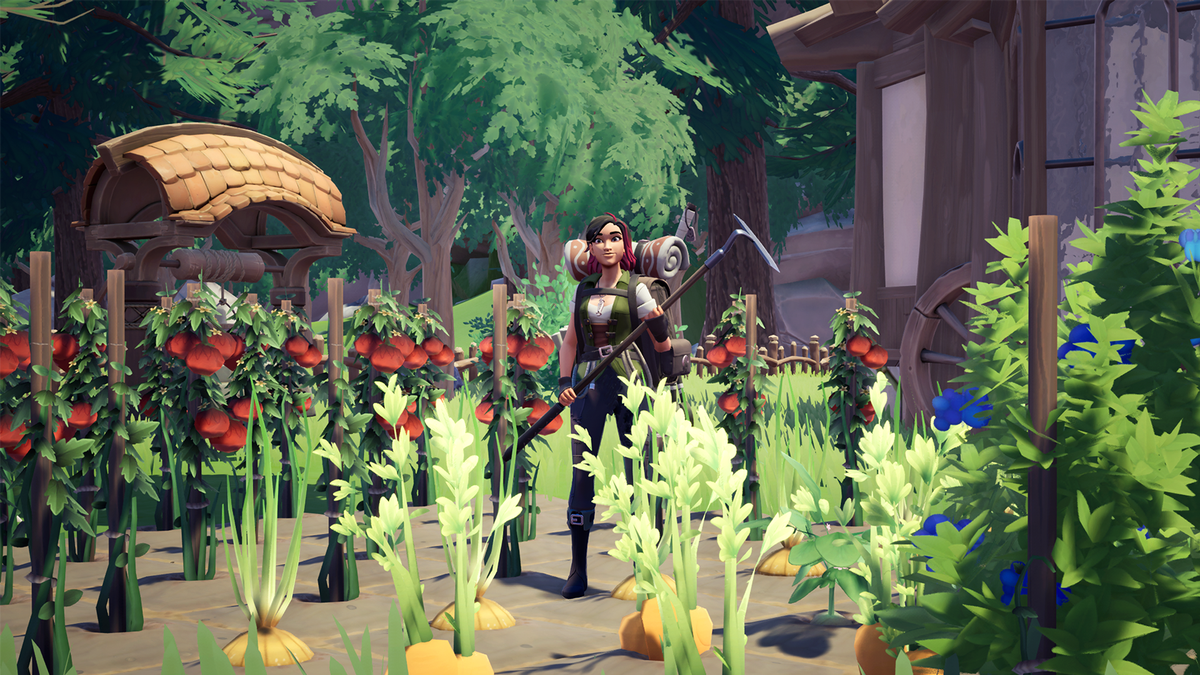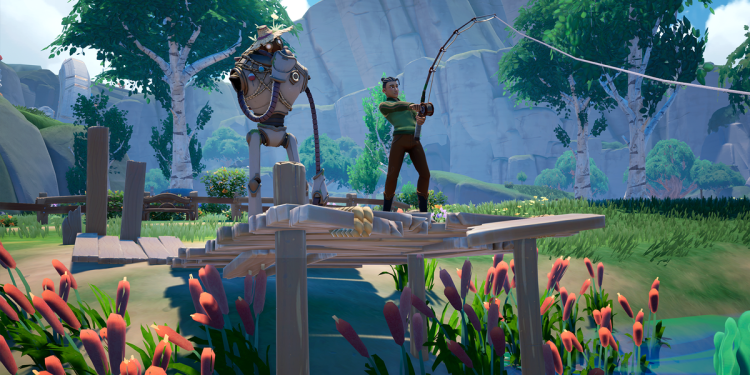Palia is an adorable and cozy life simulator MMO that generates endless amounts of serotonin and dopamine in my brain. It’s also a clear work in progress from developer Singularity Six; every intriguing clue and tantalizing hint seems to lead to an “under construction” sign or a brick wall. The progression loop holds a certain tension: You can grow crops, build a home, and explore a fantastical and bucolic fantasy world… but the magic will stop at specific boundaries until the developer is ready to cut the ribbon.
In Palia, I play a human who has recently returned to the world of Palia after a long and mysterious absence. The human empire has long since crumbled, leaving only mysterious ruins behind. Palia has been resettled by purple elves called Majiri, aided by helpful golems. I settle in Kilima Village, where the Majiri help me build my own humble home and get resituated in a world that’s been human-free for a very long time.
The villagers I meet, and the interactions I have with them over the course of my adventures, are hands-down the strongest part of Palia. There are just under two dozen villagers, and while all of them start off seeming fairly one-dimensional, the more time I spend with them, the more I get to know and appreciate their hidden depths. The romance options are also surprisingly fulfilling; I’m dating the bad-boy cook and the fish-loving goofy golem, and it’s been very wholesome. (Everyone in Palia is either poly, or pretty cool with it. The chill vibes even extend to dating every single option in the valley at once, so there are no heart-wrenching choices to make.)

Image: Singularity Six
The player starts out with plenty of allies, but there’s no real antagonist or enemy in Palia, and as such, there’s no combat — at least, not currently. Instead, I busy myself in-game with the eight activities: bug catching, mining, foraging, hunting, fishing, cooking, furniture making, and gardening. These simple activities flow together nicely; I can lose hours to the loop of heading out to hunt, finding rare ore and foraging goods while I’m at it, then hauling everything back home to turn into fancy furniture.
There are two zones: Kilima Valley and Bahari Bay, each with its own creatures and resources to find. Right now, those resources are relatively limited; there are five kinds of metal, three kinds of wood, two types of creatures (each with three “levels”), and a few dozen fish, bugs, and resources to forage. It’s all very nice, but I’ll admit I crave more variety in the environment. There’s no weather, for example; I’m longing for the addition of environmental states like wind, snow, or torrential rain. Nights are always luminous and cozy, thanks to the two moons, and it makes homecomings feel less eventful.
Once I’m home, I take care of my crops, redecorate my house, and prepare delicious jams or cook meals to sustain myself in the wilderness. It’s a similar formula to many other crafting, survival, and life simulator games, but with the hard edges sanded off. The crafting menus are one of the game’s only rough parts, but Singularity Six has pledged comprehensive improvements to these menus and to storage. Despite minor issues like these, all of the core systems are functional and mostly fun.
All of this has been enough to keep me busy for the better part of a month. I’ve been playing Palia every chance I get, so I’ve unlocked most of the game. I’ve maxed my relationship with every villager, bought each profession’s special guild items with achievement coins, and built both a cozy starter home and an opulent mansion. The problem with Palia is actually that it’s an MMO, and its cozy trappings clash hard with the design standards and expectations that come with an MMO.

Image: Singularity Six
Palia is great for chill parallel play. I enjoy showing off my house to my friends and visiting their lots, or heading out to Bahari Bay together to find rare magical animals, trees, and ore. We can cook together in my kitchen, or each pursue our own goals while chatting about life on Discord. But there are more barriers to encounter: intriguing temples that are sealed off until a future content update, magical locales that villagers discuss before reminding you that they’re off-limits for now, and mysteries that don’t have enough hints in-game to solve.
There’s also a disappointing lack of depth to the existing two zones. There are a few secret books to find, and a couple of interesting-looking nooks, but there isn’t any of the sense of discovery and wonder you might find in World of Warcraft or even a smaller game like Conan Exiles. Everything looks gorgeous and colorful, but ultimately shallow and inconclusive. Palia falls short at sneaking compelling secrets into its world, even though that’s one of the major conventions of the MMO genre.
There also isn’t much of an MMO endgame, beyond people running “Cake Parties” out of their kitchens. It’s fun to play a minigame of Overcooked with friendly folk, and make hundreds of thousands of gold by selling the cakes that result… but it’s not enough to carry an MMO endgame. There are flow trees that require groups of people to cut down, but that’s also pretty simple as far as MMO content goes, and it can be achieved in total silence with no communication between players.

Image: Singularity Six
Palia’s greatest redemption — or its ultimate failure — is going to come from Singularity Six’s update schedule. To its credit, the developer has already been nimble with updates and fixes. The game’s first major seasonal event, the Maji Market, launched at the end of August. In its first iteration, the event was an infuriating nightmare carnival where players had to compete to chase down a very limited number of creatures in the hope of scraping together enough tickets to eventually buy a cosmetic. After a recent patch, the event now showers players with rewards at the market.
While I was writing this review, Singularity Six released another patch that opens up one of the temples in the world, and adds two new crops, a new furniture set, and other quality-of-life fixes. Singularity Six has also tweaked the controversial cash shop; although the studio is still adding new outfits, there have already been necessary changes to pricing, bundles, and shop clarity.
At a certain point, Singularity Six will have to stop promising grand adventures and strange new lands through dialogue, and actually unveil them for real. For now, I’m still along for the ride.
























































